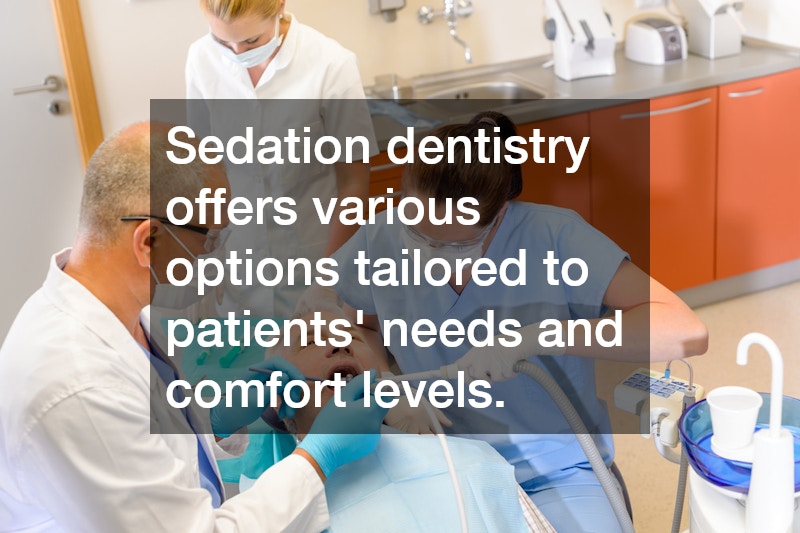Sedation Dentistry: Sedation Options and Which Is Right For You?
Explore the various sedation options available in dentistry, their benefits, and how to determine which is suitable for you. This article aims to inform and guide you through the choices and decisions involved in sedation dentistry. Understanding the different types of sedation can help alleviate anxiety and make dental procedures more comfortable for patients.
What Are the Different Types of Sedation Used in Dentistry?
Oral Sedation
Oral sedation is one of the most commonly used methods in sedation dentistry, often involving the use of medications such as diazepam or triazolam. This method is particularly popular because it is easy to administer, requiring patients to take a pill either the night before or a few hours before their procedure. Oral sedation can make patients feel relaxed while remaining awake and responsive.
The effects of oral sedation can vary depending on the dosage and the patient’s metabolism, but generally, it induces a state of calm. Patients may experience grogginess, but the relaxing effects help mitigate anxiety, especially for those nervous about dental visits. It is suitable for individuals with mild to moderate anxiety and can be used for routine procedures like fillings and cleanings.
Oral sedation is considered safe when administered correctly, but it does require someone to accompany the patient to and from the appointment due to the lingering effects of the medication. One of its benefits is that it does not require needles or IVs, making it a preferred choice for those with needle phobias. Overall, oral sedation is an effective option for making dental visits more manageable for anxious patients.
IV Sedation
Intravenous (IV) sedation is another sedation option used to help patients relax during dental procedures. This method involves administering sedative drugs directly into the bloodstream, allowing for a quick onset and precise control over the sedation level. It is often recommended for more invasive procedures or for patients with higher levels of anxiety.
IV sedation allows for a deeper state of sedation, and patients may have minimal memory of the procedure. Because it is administered directly into the bloodstream, dental professionals can adjust the dosage as needed to maintain patient comfort. However, unlike general anesthesia, patients remain conscious and can respond to the dentist’s instructions.
It is imperative that patients disclose their complete medical history to the dentist before undergoing IV sedation, as certain conditions and medications may affect its suitability. This option requires careful monitoring by the dental team to ensure the patient’s safety throughout the procedure. While it provides a more profound calming effect, patients considering IV sedation must be prepared for potential side effects like dizziness or nausea post-treatment.
General Anesthesia
General anesthesia is typically reserved for extensive dental procedures or for patients who cannot tolerate other forms of sedation. It involves rendering the patient completely unconscious in a controlled medical setting, ensuring they feel no pain or discomfort during the procedure. Dentists generally use this form of sedation for oral surgeries, particularly complex extractions or multiple procedures done simultaneously.
The use of general anesthesia is closely monitored by an anesthesiologist or a nurse anesthetist, ensuring that the patient’s vital signs remain stable throughout the procedure. This sedation option requires thorough pre-procedural assessments, including evaluating medical histories and potential drug interactions. Recovery from general anesthesia takes longer, and patients must arrange for transportation home and have someone to monitor them for a few hours after the procedure.
Patients considering general anesthesia should weigh the benefits against the risks, such as adverse reactions or complications related to anesthesia. While it is an effective option for those unsuitable for other forms of sedation, it requires more preparation and carries higher risks. Nevertheless, for those with severe anxiety or undergoing lengthy procedures, general anesthesia provides the necessary relief and ensures a pain-free experience.
How Do I Choose the Right Sedation Option for Me?
Consultation with Your Dentist
The best way to determine the appropriate sedation option is through a detailed consultation with your dentist. During this discussion, it’s essential to disclose your complete medical history, any current medications, and any previous experiences with sedation. Your dentist will also evaluate your anxiety levels and the nature of the dental procedure to recommend the most suitable sedation type.
Consultations are crucial as they allow the dentist to identify any potential risks and tailor the sedation approach to your specific needs. For example, patients with respiratory conditions or allergies may require adjustments to standard sedation protocols. Open communication with your dentist is key to ensuring your safety and comfort during dental treatments.
Your dentist will likely assess factors like your pain tolerance, past dental experiences, and any personal preferences you might have regarding sedation methods. Based on this evaluation and the nature of the planned dental procedure, a collaborative decision can be made. By actively participating in this decision-making process, you can ensure that your dental experience is as comfortable and stress-free as possible.
Evaluating Risks and Benefits
When choosing a sedation method, it’s important to evaluate both the risks and the benefits associated with each option. Oral sedation, for instance, offers the benefit of simplicity and ease but may cause prolonged drowsiness post-procedure. IV sedation offers more control over sedation levels but might not be ideal for everyone, especially those with certain medical conditions.
General anesthesia, while comprehensive, carries higher risks typically associated with anesthesia. Each option has its pros and cons, and understanding these can help in making the best choice for your situation. Your dentist can provide insights into the likelihood of side effects and help you weigh them against the benefits based on your unique needs.
Ultimately, understanding both sides of the sedation spectrum empowers you to make more informed decisions. Discuss any particular concerns or preferences with your dentist, and don’t hesitate to ask for additional information if needed. Evaluating risks and benefits jointly with your dental professional ensures a tailored approach that maximizes comfort while minimizing potential complications.
Personal Comfort and Preferences
Your personal comfort and preferences should play a significant role in deciding which sedation option to choose. For some, the idea of being partially awake yet relaxed is comforting, making oral or IV sedation appealing. Others might prefer the complete unconsciousness provided by general anesthesia, especially during extensive or lengthy procedures.
Consider reflecting on past experiences with dental treatments and any forms of sedation. Understanding your own anxiety levels and what helps you feel at ease can guide your choice significantly. Personal comfort should not be overlooked, as it greatly influences the overall patient experience and satisfaction with dental care.
In addition to considering your comfort preferences, think about logistical aspects such as the need for someone to drive you home or the amount of recovery time you can accommodate in your schedule. Deciding on the right sedation option is not only about the procedure itself but also about setting yourself up for a smooth, stress-free recovery. Always communicate your preferences with your dentist to ensure that the chosen sedation aligns with your comfort zone and overall expectations.
Conclusion
Sedation dentistry offers various options tailored to patients’ needs and comfort levels. Understanding these options and consulting your dentist can help ensure the best choice for a safe and anxiety-free dental experience. By evaluating your medical history, procedure requirements, and personal preferences, you can make an informed decision that enhances the quality of your dental care.






